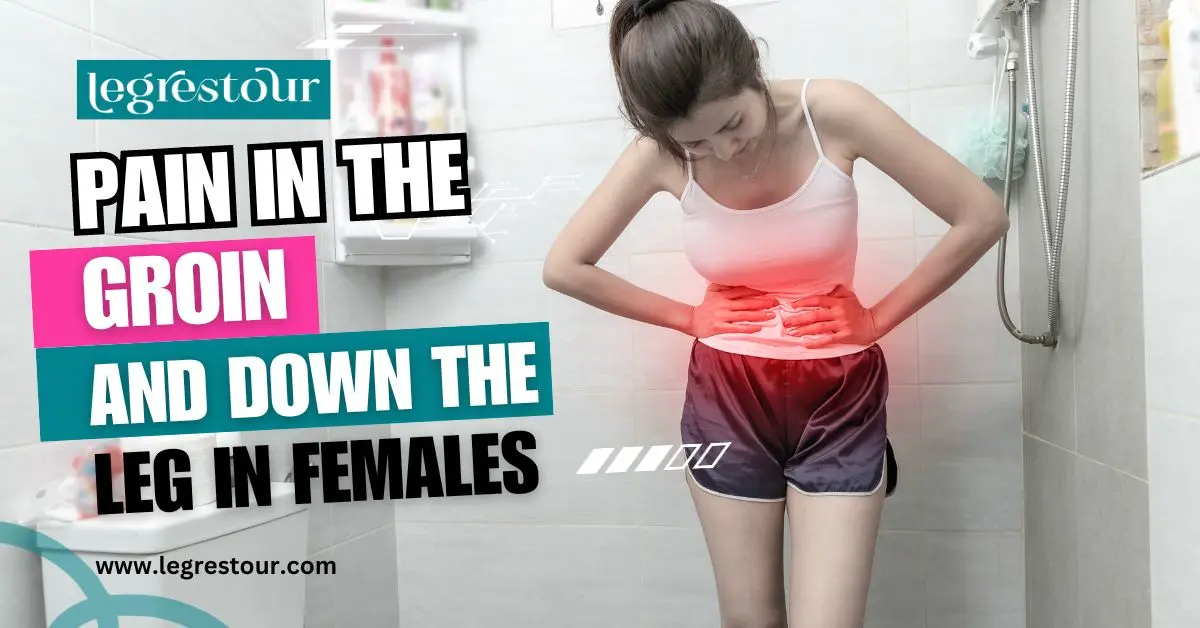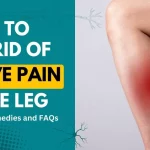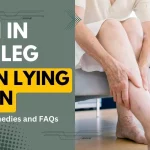Groin and leg pain in females can stem from a variety of conditions, ranging from minor muscle strains to more serious medical issues. The groin refers to the inner thigh region near the external genitals, while leg pain can radiate down the thigh, calf, or foot. Depending on the underlying cause, the pain may be sudden and acute or gradual and chronic. Some common causes include:
- Musculoskeletal issues like muscle strains or tears, arthritis, bursitis, tendonitis
- Hernias such as femoral or inguinal hernias
- Gynecological problems like endometriosis, ovarian cysts, fibroids
- Nerve pain or radiculopathy from lumbar disc issues or sacroiliac joint dysfunction
- Vascular problems like peripheral arterial disease or blood clots
- Infection of the skin, joints, or pelvic region
- Kidney stones or bladder issues
The location, severity, and associated symptoms can help pinpoint the source of the pain. Treatment depends on the diagnosis but generally involves rest, pain relief, physical therapy, and sometimes surgery. Home remedies and lifestyle measures can also help manage discomfort. This article explores the common culprits of female groin and leg pain and provides an overview of medical treatment and at-home care.
Causes
Musculoskeletal Causes
The most common source of groin pain in women stems from muscular or skeletal problems. Examples include:
Muscle strain
Overuse or trauma to the hip flexors or adductors from athletic activity can cause a pull or tear. Sudden sharp pain occurs.
Hip arthritis
Degenerative joint disease causes chronic hip stiffness and aching. Pain worsens with activity.
Trochanteric bursitis – Inflammation of the bursa sac near the outer hip bone leads to localized pain when lying on the affected side.
Pelvic bone stress fractures
Unusual but intense groin pain results from repeated impact to the pelvic bones. Seen in runners.
Lumbar radiculopathy
Irritation of a nerve root in the lower spine causes pain to radiate down the leg. Numbness or tingling may occur.
Sacroiliac joint dysfunction
Inflammation of the SI joint causes buttock or low back pain radiating to the thigh or groin.
Gynecological Causes
Women are prone to gynecological issues that can radiate pain to the groin and thigh regions including:
- Endometriosis – Cells normally lining the uterus grow outside it, often affecting the ovaries or pelvic region. Pain worsens around periods.
- Fibroids – Noncancerous tumors in the uterus can cause pelvic pain and pressure. Heavy periods often occur.
- Ovarian cysts – Fluid-filled sacs on the ovaries may twist or rupture, causing severe localized pain.
- Pelvic inflammatory disease – Infection of the female reproductive organs causes lower abdominal and pelvic pain. Fever may occur.
- Mittelschmerz – One-sided pelvic pain happening at mid-cycle during ovulation. Usually lasts a few days.
Nerve and Vascular Causes
Problems with nerves or blood vessels can also generate leg or groin pain such as:
- Peripheral arterial disease – Plaque buildup causes reduced blood flow, particularly in the legs. Cramping or fatigue results.
- Aortic aneurysm – Weakness in the abdominal aorta may cause pulsing sensations or pain in the lower abdomen.
- Blood clots – A deep vein thrombosis causes calf or thigh swelling, redness, and sharp pain.
- Meralgia paresthetica – Compression of the lateral femoral cutaneous nerve leads to burning, numb thigh pain.
- Piriformis syndrome – Compression of the sciatic nerve by the piriformis muscle causes buttock and leg pain. Numbness may occur.
Other Causes
Less common sources of groin and thigh discomfort include:
- Kidney stones – Sharp pain occurs as stones move through the urinary tract. Nausea, vomiting, and blood in urine may be present.
- Hernias – Weakness in the abdominal wall causes bulging and pinching nerve pain. Coughing makes it worse.
- Skin infections – Cellulitis, boils, or MRSA infections can cause swollen, painful groin lymph nodes. Fever occurs.
- Hip joint infection – Bacteria in the hip joint creates severe pain and restricted mobility. Seen after hip replacement.
- Pelvic bone fracture – Breaks in the pubic bone from trauma lead to sudden, severe groin pain and bruising.
- Bladder issues – Cystitis, prostate problems, or interstitial cystitis create pelvic pressure and pain.
Remedies and Treatment
Treatment depends on the condition but may involve:
Rest
Avoiding activities that worsen pain lets injuries heal. Crutches can assist with mobility.
Ice/Heat
Ice reduces inflammation while heat eases muscle spasms. Use whichever provides greater relief.
OTC Medication
NSAIDs like ibuprofen or naproxen ease pain and swelling. Acetaminophen can also help.
Physical Therapy
Stretches and exercises strengthen muscles and improve range of motion and function.
Bracing
Supports like knee or wrist braces immobilize and protect joint injuries.
Injections
Cortisone shots reduce inflammation. Nerve blocks can temporarily numb pain.
Surgery
Procedures may be done for joint repairs, hernia correction, cyst removal, or hysterectomy.
Lifestyle Measures
Smoking cessation, weight loss, and activity modification protect joints.
Alternative Therapies
Massage, acupuncture, and practices like tai chi and yoga help some patients manage discomfort.
Home Remedies for Pain Relief
Many at-home measures can also provide pain relief and support healing:
- Cold compress – Applying an ice pack for 10-15 minutes constricts blood vessels and reduces inflammation.
- Heat pad – Warmth helps relax tight muscles that can contribute to or result from joint pain.
- Epsom salt bath – Magnesium sulfate gets absorbed through the skin to ease muscle soreness.
- Over-the-counter pain medications like acetaminophen, ibuprofen, or naproxen. Don’t exceed dosage limits.
- Supplements like glucosamine, turmeric, ginger, or omega-3 fatty acids have anti-inflammatory properties.
- Gentle stretching and light exercise like walking improve circulation and joint mobility.
- Comfortable supportive shoes with orthotics take pressure off the hips, knees, and feet.
- Mind-body practices like meditation, yoga, tai chi, and qi gong help with pain coping and stress reduction.
When to See a Doctor
See your physician promptly if you experience:
- Sudden, severe groin or leg pain
- Inability to walk or bear weight on the leg
- Fever, redness, swelling, or discharge from the groin
- Numbness, weakness, or loss of bowel/bladder control
- Unexplained weight loss along with the pain
- No improvement after 2 weeks of home treatment
Frequently Asked Questions
1. What’s the most common cause of leg and groin pain in females?
Muscle strains and tendonitis from overuse or sports injuries are the most prevalent sources of discomfort. Arthritis and spinal issues are other top causes.
2. What symptoms indicate I should go to the ER for leg or groin pain?
Seek emergency care if you have sudden, crushing pain, cannot walk, have weakness or numbness in the leg, or have fever and swelling or discharge from the groin. These signify a possible aneurysm, fracture, discs issue, or abscess.
3. Can ovarian cysts cause leg pain?
Yes, ovarian cysts can lead to leg pain when they rupture or twist. This causes severe abdominal and pelvic pain that can radiate down the thigh. Seek medical care right away if this occurs.
4. Does endometriosis only cause pain during periods?
No, endometriosis can cause chronic pelvic pain throughout the month, not only during periods. It develops when uterine cells grow elsewhere and bleed internally during the menstrual cycle.
5. If I have hip arthritis, will I always have some pain with walking?
If hip arthritis is advanced, some degree of pain and stiffness is often present with walking and activity. Anti-inflammatories, heat/cold therapy, and cortisone injections can help manage the discomfort.
Conclusion
In summary, leg and groin pain in women usually arises from muscle strains or common gynecological issues, but nerve, vascular, and arthritic causes are possible. Seeing a doctor for accurate diagnosis and medical treatment is key, along with at-home remedies for pain management. Prompt medical attention is advised if sudden, severe, or worsening pain occurs. With proper care, many women can find relief from groin and leg discomfort.
It’s also important: Leg Pain When Standing Up From Sitting



